Magazine: The problems with the gobies
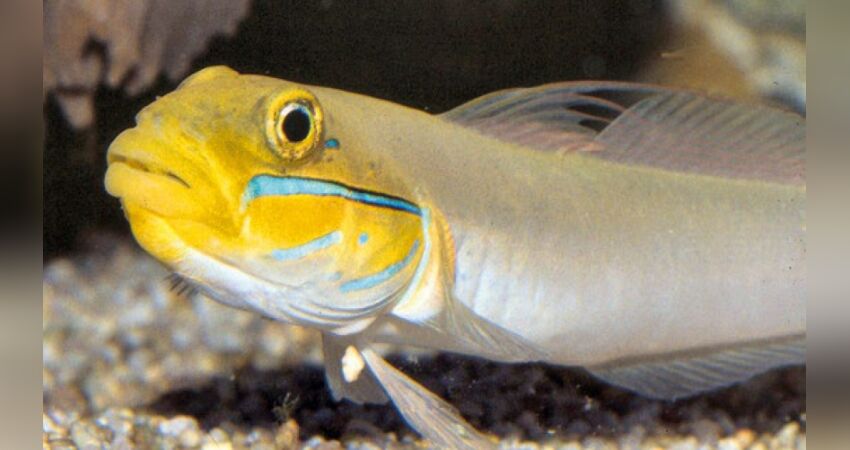
As a responsible aquarist, you decide to do without fish that grow large, and you are not lucky with the small animals either! by Helmut Strutz from issue 2 of Korallenriff Magazin
Almost every fish in the coral reef is a food specialist in its own way. Surgeonfishes eat algae and biofilms, many emperors feed on sponges and tunicates, butterflyfishes often feed on coral polyps and scorpionfishes are happy about careless "aquarium fishes". Now we don't want to have all these fishes in the aquarium, we decide to have gobies, because we had enough sand - or so we thought.
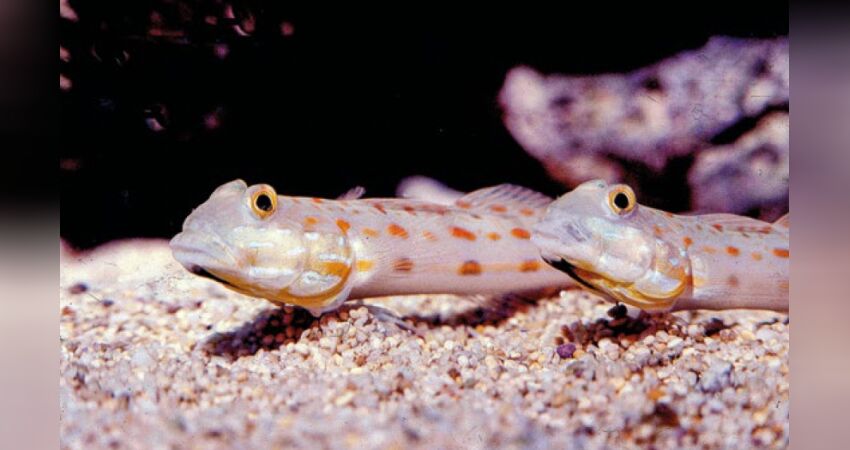
We acquire a pair of crab eye gobies (Signigobius biocellatus) and enjoy their harmony. According to the marine encyclopedia, the fish are site-faithful, pretty as a picture, grow to about seven centimeters in size and, with a little luck, spawn regularly in the aquarium. Due to the small body size we considered these animals as an optimal stock for our 300 liter aquarium. Far from it! The animals, which are called "dredge gobies" in the marine aquaristics, which are technically correctly called sand gobies, belong to the sand filter feeders. This means that the genera Amblygobius, Signigobius and Valenciennea take up large amounts of fine sand daily with their mouths, "chew through" it and eat tiny food particles contained therein. The biofilm (bacteria, unicellular algae, etc.) that forms on the bottom probably plays a role that should not be underestimated. However, this is not detectable in the stomach of the fish, how could it be. Bacteria are quickly digested and then there is nothing left. For this reason, the diet of sand gobies is currently little researched. However, it is certain that many gobies such as Valenciennea wardii or, unfortunately, the crab eye goby are considered food specialists, which necessarily require natural biofilms as food. In an aquarium with too low sand volume, it will only take a few months until harmony is history! The fish will eventually fight each other due to food competition and one will die. Then it does not take long and the second one also dies, although it now has twice the amount of food available.
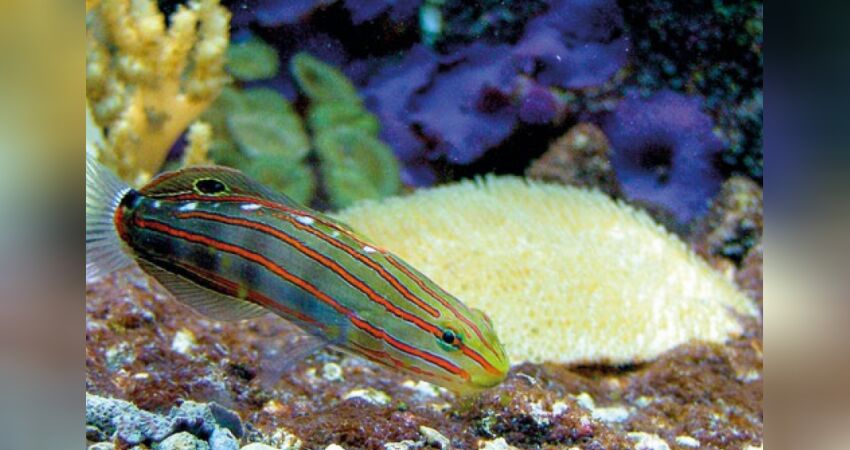
The reason for this phenomenon can be explained as follows. The fish are strict monogamists. They stay together permanently once they have mated. However, in an aquarium that is too small, unfortunately what has to come happens. The fish don't get full anymore, the substrate is chewed through and doesn't give anything anymore. Simply - the fish are starving and this is exceedingly bad for a happy relationship. They start to regard the sexual partner as a food competitor and to fight against him. First one dies and shortly after that the other one dies too. The reason for this sudden death of the partner is still a mystery to science. In a study once in the sea a partner of a pair was removed. A short time later, the second fish died here as well.
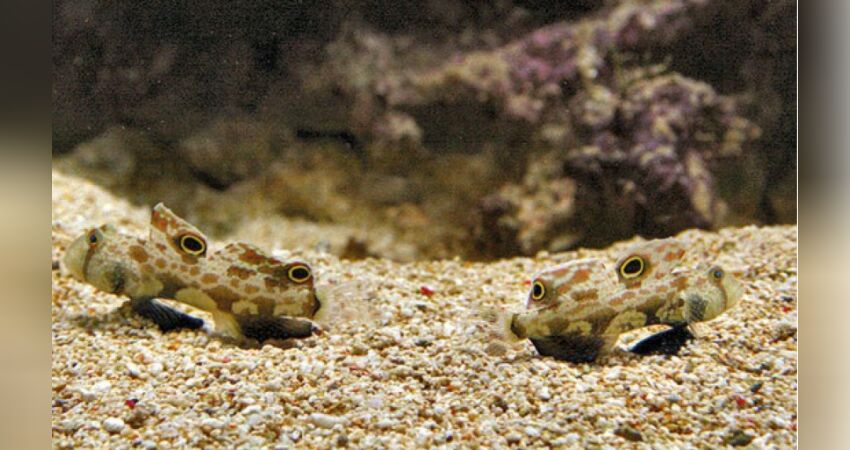
Even in large aquariums the gobies can hardly be kept alive for more than a year. Even abundant feeding with frozen food is of little help, since the fish seem to be specialized on biofilms as mentioned above.
André Lutý has reported in issue 1/2016 of the former magazine series "der Meeresaquarianer" about the biotopes and territorial requirements of many gobies. Among others about the popular dredge gobies of the genus Valenciennea. When reading this article you can draw very good conclusions about the aquarium keeping and then you should be able to analyze the problems in the aquarium better. You can see that these gobies are not found in the reef at all, but in sandy lagoons, or on extensive sandy areas in front of the reef. There, they usually inhabit a burrow in pairs and chew the substrate all day. Tides and currents constantly deliver fresh sand colonized with bacteria to their doorstep. In our aquariums this process is impossible to reproduce. Again and again it is discussed in internet forums, why the keeping of the animals usually only goes well for one year. Then one goby becomes a fury and chases the second one to the devil. Not seldom the inferior one jumps out of the aquarium or is maltreated in such a way that it finally dies. It is then often pseudo-scientifically explained that the females carry out a "forced transformation" to males. But why should nature come up with such an insanity? It would not make much sense. After all, the transformed animal would have to leave its mate and the protective burrow, swim across the open sandy area and look for a new burrow itself. However, these are by no means frequent and usually already occupied. In the worst case by a predator. No, the goby would hardly have a chance to survive. And the remaining animal? It would surely like to have a new partner, but where should it come from? After all, the fish can't call up some dome site on the Internet. And also it would have to swim over the sand and also still know where a partner of its sex is looked for. No, I don't think that's how it works. In addition to that, they are strict monogamists.
Why don't we come up with the simplest explanation for the sudden incompatibility of the fish - being hungry!
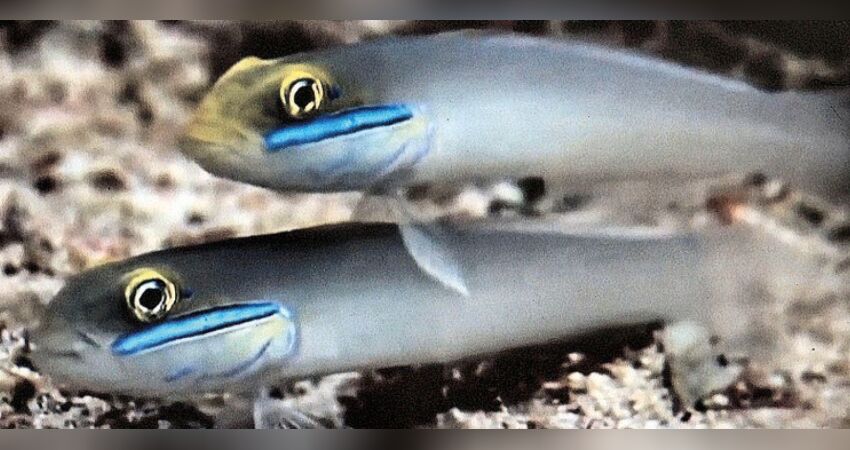
Many of the species we keep in our aquariums grow to around 20 centimeters in nature. I have never seen such large Valenciennea in aquariums. But instead many emaciated pairs that were on the verge of divorce. For me it is incomprehensible that the fish are imported and sold again and again. There the reference that the fish are suitable only for experienced aquarists is completely superfluous. In my opinion, the animals are difficult or even impossible to keep in the long run. If, then only in aquariums with a sand layer of at least five centimeters and a bottom area of more than one square meter. My friends Brigitte and Ruedi in Switzerland had a pair of Valenciennea in their 3500 liter aquarium for many years. However, the fish had created a ten centimeter high sand mound in one corner. But this is an exception.
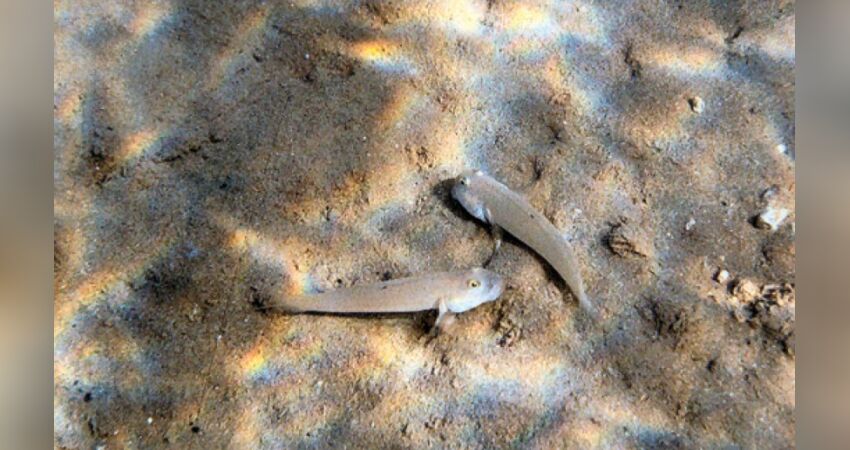
One would think that at least the plankton eaters among the gobies would be more durable. This is true for damselfish, but unfortunately not for gobies. The popular arrow or sword gobies are not only horribly skittish and therefore regularly jump over relatively high borders of the aquarium. They also do not get along in the long run. If you get a group of Nemateleotris or Ptereleotris, you will soon notice that the group gets smaller and smaller. But even if there are only two fish left, they will not become a pair. In the end there is usually only one fish left and that is not appropriate for the species. You could say it's your own fault. Of course this is not a solution. The problem for such behavior sits mostly before the aquarium!
Some years ago I could observe a group of Ptereleotris microlepis in the Red Sea. This was not easy at all, because the light blue fish were swimming one meter below the water surface and the background was also light blue. The fish were in the open water far above the rocky bottom. And what were they doing? They ate and that continuously. Is there perhaps the solution? Are these animals continuous eaters? The continuous feeding of artemia euplii or saltwater moina could be successful. The fish would be worth a try, as the firefish (N. magnifica) is one of the most beautiful and sought-after arrow gobies!
Helmut Strutz
How do you like this article?
Info
Author

Bookmark
Comments
Topics
Similar articles
- Umfangreiche Tips zur Haltung von Haien
- Fischaquarium pflegeleicht, oder?
- Holacanthus tricolor - Die Reanimation eines Kaiserfisches
- Muränenhaltung im Aquarium
- Steinfisch muss umziehen
- Doryrhamphus pessuliferus wurde gezüchtet
- 27 - Angelfish in a community aquarium?
- Feeding Coral Fish Part 4
- Eviota und Trimma - eine Bereicherung der Aquaristik
- Einzel, Gruppen, - und Harems-Haltung bei Zwergkaiserfischen
Comments To the top
Please register
In order to be able to write something yourself, you must register in advance.






